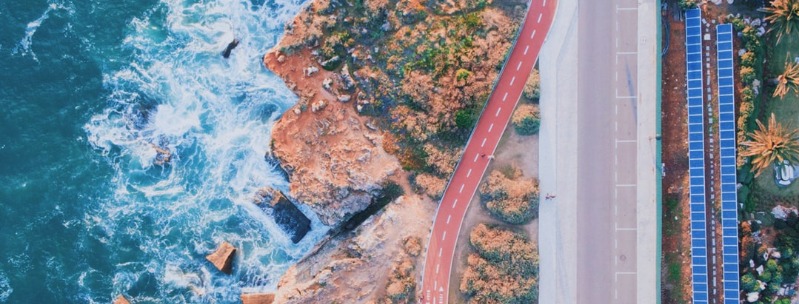13 Best Florida East Coast Beaches
The east coast beaches of Florida stretch for 360 miles along the Atlantic coast. These destinations have all you need for a beach vacation, from the glitzy vibe of Miami Beach to the laid-back elegance of staying at one of Florida’s east coast beach resorts.
Boca Raton Beaches
Boca Raton (literally “the mouth of the rat”), twenty miles north of Fort Lauderdale, is noteworthy mostly for its abundance of Mediterranean Revival architecture, a style prevalent here since the 1920s and kept alive in the downtown area by strict building codes.
It all goes back to Addison Mizner, the “Aladdin of architects”, who swept in to Boca Raton on the tide of the Florida property boom and bought up 1600 acres of farmland. Mizner’s vision of gondola-filled canals, luxury hotels and even a great cathedral never came to fruition, but the few buildings he completed left an indelible mark.
His million-dollar Cloister Inn , for example, grew into the present $200-a-night Boca Raton Resort and Club, 501 E Camino Real, a pink palace of marble columns, sculptured fountains and carefully aged wood.
In its legendary confines at Mizner Park, off US-1 between Palmetto Park Road and Glades Road, the open-air plaza is adorned with palm trees and waterfalls.
A mile north of Hwy-798 at 1801 N Ocean Blvd/Hwy-A1A, the Gumbo Limbo Nature Center covers twenty acres inhabited by osprey, brown pelicans and sea turtles.
https://www.youtube.com/watch?v=SwGpNd6iZt0
Boca Raton’s most explorable beachside area is Spanish River Park, a couple of miles north of downtown. Most of these fifty acres of vivid vegetation and high-rise greenery are only penetrable on trails through shady thickets.
Boynton Beach
Located between Delray Beach and West Palm Beach, Boynton Beach is in the heart of Florida’s Gold Coast.
Boasting some of the finest watersports in the state of Florida, Boynton Beach offers excellent drift fishing and scuba diving off its wide sandy beaches.
World-class golf courses, dozens of restaurants and pubs, and relaxed shopping in the Boynton Beach Mall and many unique specialty shops round out the range of available activities.

Boynton Beach has some of the finest diving in North America. On an average day, the warm waters of the Gulf Stream flow just a mile or two off the shore, producing warm and clear diving conditions that rival those found in the Caribbean.
The depths of the ocean offer divers a beautiful playground in which to examine the creatures of the sea. With many local dive boat operators and shops, there are opportunities for beginners and experts alike.
The warm, tropical waters and three major reef systems just a few hundred yards offshore are teeming with marine life including coral, morays, sharks, barracudas, sea turtles and shoals of colorful fish.
The Palm Beach Post rated Boynton Beach’s Oceanfront Park the best overall beach in Palm Beach County in 2001.
Boynton Beach’s Oceanfront Park is located at 6415 North Ocean Blvd., approximately 1/4 mile north of Ocean Avenue on State Road A-1-A. The facility is open seven days a week, 365 days a year and is manned by trained lifeguards from 9:00 a.m. to 5:15 p.m.
Come out for sun, sea and waves, and enjoy yourself in Boynton Beach.
Cocoa Beach
Located on a barrier island nestled between the great Atlantic Ocean and the Banana River Lagoon on Florida’s Central East Coast, Cocoa Beach continues to link the birth of the Space Age with the wonder of the future.
Just six miles long and mostly less than one mile wide, Cocoa Beach is truly a unique place. Where else can you choose between watching a space launch from the beach or precious marine and bird species in their natural habitat? Or choose between a swim in the ocean or a quiet kayak exploration off the Banana River islands from our river shore?
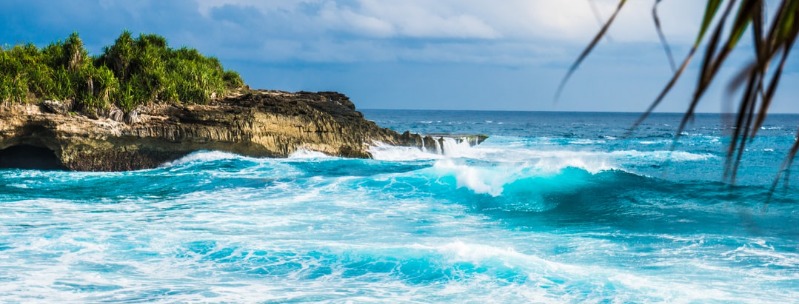
Play a round of golf at our 27-hole golf course, surf cast from the beach for dinner or just enjoy a day at the beach where you will likely see dolphins at play or be lucky enough to see an occasional whale in migration.
Widely known as the surfing capitol of the East Coast, Cocoa Beach is the hometown of a number of surfing champions – including six time world champ Kelly Slater.
To the north of the Kennedy Space Center, Canaveral National Seashore is a protected 13-mile stretch of barrier-island beach backed by cabbage palms, sea grapes, palmettos, marshes, and Mosquito Lagoon. This is a great area for watching herons, egrets, ibises, willets, sanderlings, turnstones, terns, and other birds.
The main visitor center is at 7611 S. Atlantic Ave., New Smyrna Beach, FL 32169, on Apollo Beach, at the north end of the island. The southern access gate to the island is 8 miles east of Titusville on Fla. 402, just east of Fla. 3. A paved road leads from the gate to undeveloped Playalinda Beach, one of Florida’s most beautiful.
Another good beach area is Lori Wilson Park, on Atlantic Avenue at Antigua Drive in Cocoa Beach, which preserves a stretch of beach backed by a forest of live oaks.
The beach at Cocoa Beach Pier, on Meade Avenue east of Fla. A1A, is a popular spot, especially with surfers, who consider it the East Coast’s surfing capital.
Jetty Park, 400 E. Jetty Rd., at the south entry to Port Canaveral, has lifeguards, a fishing pier with bait shop, a children’s playground, a volleyball court, a horseshoe pit, picnic tables, a snack bar, a grocery store, restrooms and changing facilities, and the area’s only campground.
Daytona Beach
The consummate Florida beach town, with its T-shirt shops, amusement arcades and wall-to-wall motels, Daytona Beach owes its existence to twenty miles of light brown sand where the only pressure is to strip off and enjoy yourself.
Once a favorite Spring Break destination when half a million college kids would indulge in underage drinking and libido liberation, Daytona Beach now discourages such activity, leaving it free to focus on its true love: motor sports.
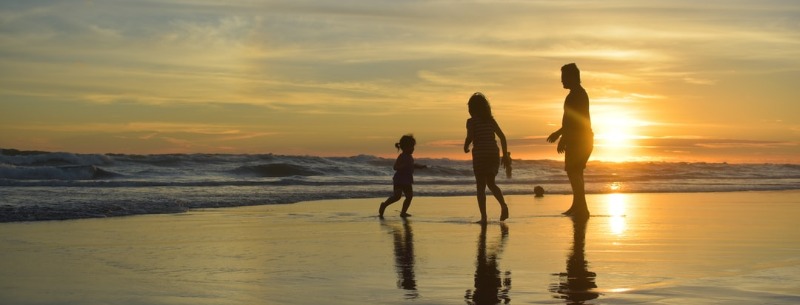
Life in this down-to-earth resort now revolves around three major festivals: February’s Daytona 500, Bike Week in early March, and the relatively new Biketoberfest.
Pioneering auto enthusiasts, including Louis Chevrolet, Ransom Olds and Henry Ford, came to Daytona’s firm sands in the early 1900s to race prototype vehicles beside the ocean.
For all the excitement that racing generates, the best thing about Daytona is the seemingly limitless beach: 500ft wide at low tide and fading dreamily into the heat haze.
Lined with an all-but-endless procession of enormous but surprisingly low-priced motels, oceanfront Atlantic Avenue holds little to lure you away from the water.
At the landward end of Main Street Pier, a $3 ride up the candy-striped Space Needle enables you to look down on the surrounding morass of low-rent bars and tattoo parlors. You can’t get to the far end of the pier, though, because Hurricane Floyd knocked out 280ft of it in 1999.
Jacksonville Beaches
Situated in the great double loop of the St Johns River and with long established lumber and coffee industries, Jacksonville, the largest city in the US – 841 square miles – is suspicious of anything that might upset its hard-working tradition.
Pleasure seekers are expected to stick to the beaches. Even the film industry, which came here seeking a base in the 1910s, was scared off by the religious zeal of the locals and settled in California instead.
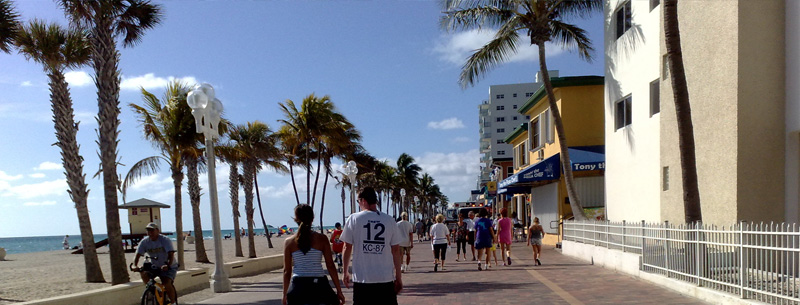
The growing size of the white-collar sector has eased the visual blight of years of heavy industry, and efforts have been made to enhance Jacksonville’s appeal by creating parks and riverside boardwalks.
To get an overview of downtown Jacksonville, take the Skyway monorail from the Convention Center to Hemming Park, a ten-minute journey at eye level with the high-rise offices.
Traveling north from Jacksonville on Hwy-A1A, you’ll first hit the Ponte Verda Beach, whose crowd-free sands and million-dollar homes form one of the most exclusive communities in northeast Florida.
However, travel a few more miles farther north and you’ll discover the much less snooty Jacksonville Beach. Although Hurricane Floyd destroyed the pier in 1999, the area around it remains the center of activity.
If you tire of watching the novice surfers here and want some action of your own, Adventure Landing, 1944 Beach Blvd, offers an uphill water coaster, wave pool go-carts and an amusement park.
Two miles north of the old pier, the more commercialized Neptune Beach blurs into the identical-looking Atlantic Beach. Both are best visited for eating and socializing only.
St. Augustine Beaches
Forty miles north of Daytona Beach, Hwy-1 passes through the heart of St. Augustine.
Few places in Florida are as immediately engaging as this old city, with the size and even some of the looks of a small Mediterranean town.
The oldest permanent settlement in the US, with much from its early days still intact along its narrow streets, it also offers two alluring lengths of beach just across the bay.
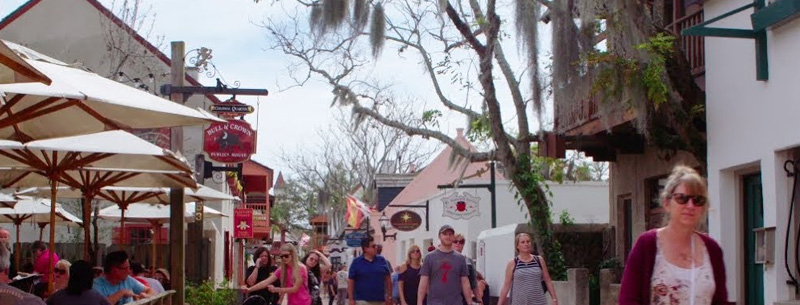
Expansion largely bypassed the town – a fact inadvertently facilitating the restoration program that has turned this quiet community into a fine historical showcase.
Some fine beaches – busiest at weekends – lie just a couple of miles from the Old Town.
Across the bay, St. Augustine Beach is family terrain, with some good restaurants and a fishing pier, but the Anastasia State Recreation Area on Anastasia Island offers a thousand protected acres of dunes, marshes and scrub, linked by nature walks.
North of Old Town (take May St, off San Marco Ave), the broad orange Vilano Beach pulls a younger crowd.
Ormond Beach
Ormond Beach is located on the northern end of the greater Daytona Beach resort area in Northeast Central Florida.
This area is known for its famous drive-on beach, one of the few available in the world.
Ormond Beach nickname, the “Birthplace of Speed”, comes from the turn-of-the-century speed records set here on the beach. Today, millions of visitors come each year to witness automobile racing at nearby Daytona International Speedway.
Bordered by the Halifax River on the west, the Atlantic Ocean on the east, and home to numerous rivers, lakes, and springs, Ormond Beach is an ideal location for a myriad of water activities.
Water and jet skiing, surfing, windsurfing, parasailing, scuba diving, and deep-sea fishing can all be enjoyed in the surrounding waters, while the shore offers the sun-seeker miles of white sand beaches for relaxation.
Visitors can also enjoy a variety of cultural and recreational events offered throughout the year.
The Casements, the former winter home of Rockefeller, is listed on the National Register of Historic Places.
Nearby, visitors to the Memorial Art Museum and Gardens can stroll through a four-acre botanical garden and appreciate native flora such as the banana plant, sago palm, and bamboo.
Jazz Matazz, an annual event held over the 4th of July holiday, showcases musicians recognized both nationally and internationally.
The subtropical climate feels more tropical in the summer. With an average high temperature of 88 degrees during the summers, it can get rather warm. But the wonderful seabreeze effect and afternoon showers cool things down and make everyone more comfortable.
A unique phenomenon, the seabreeze effect, takes the heat generated over land and mixes it with the cooler climate over the Atlantic Ocean to generate a cooling breeze over the peninsula and slightly inland.
Jensen Beach
Once just a stretch of pineapple plantations, the towns of Martin County, which include Hobe Sound, Stuart, and Jensen Beach, still retain much of their rural character. Although the area is definitely still seasonal (with a distinct rise in street and pedestrian traffic beginning after the Christmas holidays), the atmosphere is pure small town.
It is easy to see why the area, which includes neighbor Hutchinson Island with its miles of unspoiled beaches, has been a popular vacation destination for almost a century.
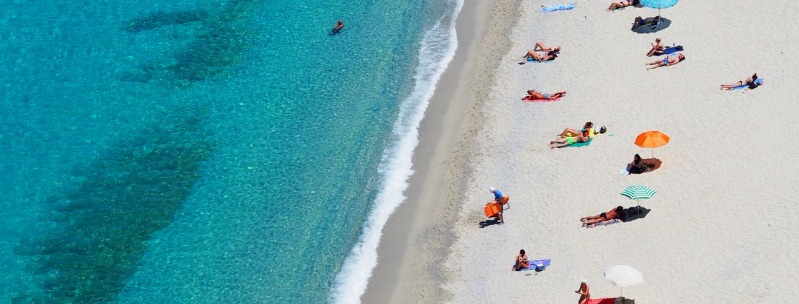
The water enthusiast will find the area a paradise, with boating, sailing, skiing and surfing all popular activities.
Scuba divers can explore shipwrecks and artificial reefs just offshore, while those wishing to stay above water will find opportunities for fishing plentiful.
With its major shopping centers, numerous specialty stores and unusual boutiques, the area is renowned as a retail shopping center of the Treasure Coast.
Jensen Beach has also earned a reputation for its fine dining, with seafood being the main bill of fare.
Melbourne Beach
Melbourne Beach is located at the southern end of Brevard County along Florida’s central Atlantic “Space Coast.” This is where 33 miles of barrier islands connect with the mainland via three causeways.
In Melbourne Beach, you will find gorgeous, white sand beaches, grassy dunes, and several beachside parks that offer recreation for the whole family.
Choose from swimming, sunning, surfing, sailing, diving and snorkeling. There are twelve area golf courses to choose from and eight tennis courts.
Brevard County area lakes offer some great freshwater fishing.
Melbourne Beach is home to the Grant Seafood Festival, usually held in February, and the Melbourne Art Festival is held in April.
Other places of interest include the Brevard Zoo, Brevard Museum of Art and Science in Melbourne and the Archie Carr National Wildlife Refuge.
The neighboring city of Melbourne has a very nice historic district with several blocks of antique shops, cafes, restaurants, and gift shops in turn-of-the-century buildings.
Melbourne Beach is also just a short drive north to the Kennedy Space Center and the Astronaut Hall of Fame. If you are lucky enough to visit during a shuttle launch, you can even view it right from the beach.
Palm Beach
A small island town of palatial homes and gardens, and streets so clean you could eat your dinner off them, Palm Beach has been synonymous for nearly a century with the kind of lifestyle only limitless loot can buy.
The nation’s nobs began wintering here in the 1890s, after Henry Flagler brought his East Coast railroad south from St Augustine and built two luxury hotels on this then-secluded, palm-filled island. Since then, tycoons, sports aces, aristocrats, rock stars and CIA directors have flocked here, eager to become part of the Palm Beach elite and enjoy its aloofness from mainland, and mainstream, life.
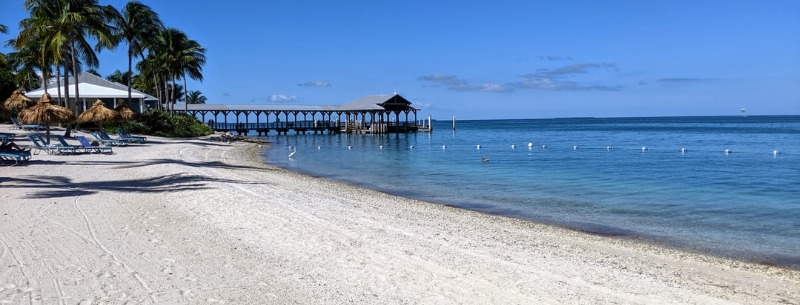
Summer in Palm Beach is very quiet, and the least costly time to stay. The winter months, from November to May, see a whirl of elegant balls, fundraising dinners and charity galas, as well as the polo season – watching a chukka or two is the only time Palm Beach denizens show themselves in the less particular environs of West Palm Beach (on the mainland).
Worth Avenue, close to the southern tip of the island, is filled with designer stores, high-class art galleries and ultra-formal restaurants, and cruised by Rolls Royces, Mercedes and Jaguars.
Its most appealing aspect is its architecture: stucco walls, Romanesque facades, and passageways leading to small courtyards where miniature bridges cross nonexistent canals and spiral staircases climb to the upper levels.
Where Cocoanut Row and Whitehall Way meet, the white Doric columns fronting Whitehall are those of the Flagler Museum, the most overtly ostentatious home on the island.
Built in 1926 in the style of an Italianate palace, The Breakers hotel, on South County Road off the main strip operates as the last of Palm Beach’s swanky resorts. Its design includes elaborate painted ceilings and huge tapestries.
Sebastian Florida Beaches
Sebastian, known as one of the last remaining fishing villages, are located at the northern tip of the Treasure Coast region in Indian River County.
Sebastian is noted for its excellent fishing, surfing and watersport activities.
A crowd of well-tanned surfers from all over the state descends on the region, especially the Sebastian Inlet, to catch some of the state’s biggest waves.
The Sebastian River area is also host to a multitude of nature-based activities. Bald eagles, one third of the manatees in the United States, and 200-300 pound loggerhead turtles can be seen from the Indian River Lagoon.
For Kayakers, the Sebastian River is a trip through pristine wilderness.
A boardwalk nature trail through the Environmental Learning center offers a view of pine trees, mangroves, thousands of species of animals, fish, birds and over 36 rare or endangered animal species.
At the very north tip of the island, Sebastian Inlet has flat sandy beaches with lots of facilities, including kayak, paddleboat, and canoe rentals; a well-stocked surf shop; picnic tables; and a snack shop.
The winds seem to stir up the surf with no jetty to stop their swells, to the delight of surfers and boarders, who get here early to catch the big waves. Campers enjoy fully equipped sites in a woody area.
Vero Beach
Located on Florida’ s east coast, midway down the peninsula, Vero Beach is surrounded by miles of lush, unspoilied beaches and the Indian River Lagoon.
Watersports enthusiasts enjoy the area’s fine diving and windsurfing. Anglers are also in heaven here, and in spring, baseball buffs can catch some action from the L.A. Dodgers as they train in exhibition games.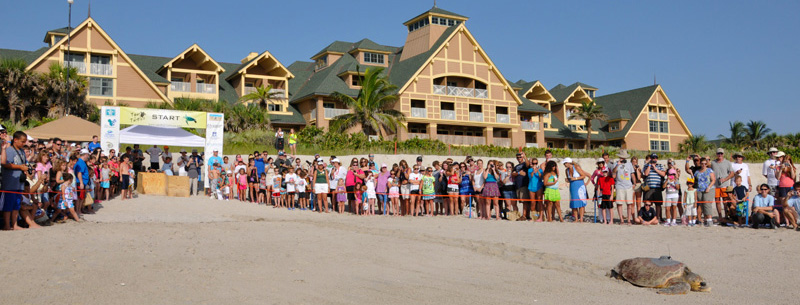
South Beach Park, on South Ocean Drive, at the end of Marigold Lane, is a busy, developed, lifeguarded beach with picnic tables, restrooms, and showers.
It’s known as one of the best swimming beaches in Vero Beach and attracts a young crowd that plays volleyball and Frisbee in a tranquil setting. A nicely laid-out nature walk takes you into beautiful secluded trails.
With all the indoor amenities, you won’t be anxious to come inside, but when you do you’ll discover excellent art and historic museums, galleries, theatre, eclectic boutiques, and great malls and outlet center that rival the most cosmopolitan cities.
